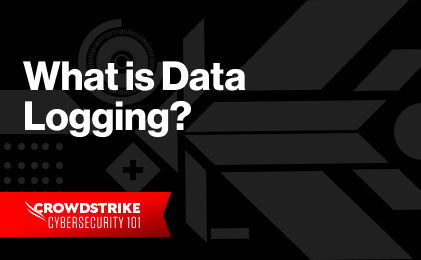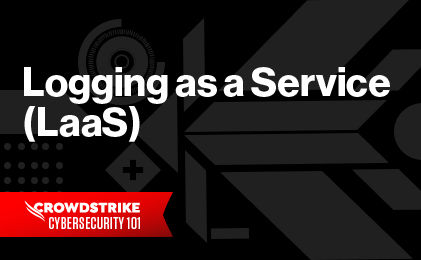Complete Guide to Next-Gen SIEM
Complete Guide to Next-Gen SIEM
What is log analysis?
Log analysis is the process of reviewing computer-generated event logs to proactively identify bugs, security threats or other risks. Log analysis can also be used more broadly to ensure compliance with regulations or review user behavior.
A log is a comprehensive file that captures activity within the operating system, software applications or devices. The log file automatically documents any information designated by the system administrators, including: messages, error reports, file requests, file transfers and sign-in/out requests. The activity is also timestamped, which helps IT professionals and developers establish an audit trail in the event of a system failure, breach or other outlying event.
Why is log analysis important?
In many cases, log analysis is a matter of law. Organizations must adhere to specific regulations that dictate how data is archived and analyzed.f
Beyond regulatory compliance, log analysis, when done effectively, can unlock many benefits for the business. These include:
Improved troubleshooting
Organizations that regularly review and analyze logs are typically able to identify errors more quickly. With an advanced log analysis tool, the business may even be possible to pinpoint problems before they occur, which greatly reduces the time and cost of remediation.
The log also helps the log analyzer review the events leading up to the error, which may make the issue easier to troubleshoot, as well as prevent in the future.
Enhanced cybersecurity
Effective log analysis dramatically strengthens the organization’s cybersecurity capabilities. Regular review and analysis of logs helps organizations more quickly detect anomalies, contain threats and prioritize responses.
Improved customer experience
Log analysis helps businesses ensure that all customer-facing applications and tools are fully operational and secure. The consistent and proactive review of log events helps the organization quickly identify disruptions or even prevent such issues—improving satisfaction and reducing turnover.
How is log analysis performed?
Log analysis is typically done within a Log Management System, a software solution that gathers, sorts and stores log data and event logs from a variety of sources.
Log management platform allows the IT team and security professionals to establish a single point from which to access all relevant endpoint, network and application data. Typically, this log file is fully indexed and searchable, which means the log analyzer can easily access the data they need to make decisions about network health, resource allocation or security.
Activity typically includes:
Ingestion: Installing a log collector to gather data from a variety of sources, including the OS, applications, servers, hosts and each endpoint, across the network infrastructure.
Centralization: Aggregating all log data in a single location as well as a standardized format regardless of the log source. This helps simplify the analysis process and increase the speed at which data can be applied throughout the business.
Search and analysis: Leveraging a combination of AI/ML-enabled log analytics and human resources to review and analyze known errors, suspicious activity or other anomalies within the system. Given the vast amount of data available within the log, it is important to automate as much of the log file analysis process as possible. It is also recommended to create a graphical representation of data, through knowledge graphing or other technique, to help the IT team visualize each log entry, its timing and interrelations.
Monitoring and alerts: The log management system should leverage advanced log analytics to continuously monitor the log for any log event that requires attention or human intervention. The system can be programmed to automatically issue alerts when certain events take place or certain conditions are not met.
Reporting: Finally, the LMS should provide a streamlined report of all events as well as an intuitive interface that the log analyzer can leverage to get additional information from the log.
The limitations of indexing
Many log management software solutions rely on indexing to organize the log. While this was considered an effective solution in the past, indexing can be a very computationally-expensive activity, causing latency between data entering a system and then being included in search results and visualizations. As the speed at which data is produced and consumed increases, this is a limitation that could have devastating consequences for organizations that need real-time insight into system performance and events.
Further, with index-based solutions, search patterns are also defined based on what was indexed. This is another critical limitation, particularly when an investigation is needed and the available data can’t be searched because it wasn’t properly indexed.
Leading solutions offering free-text search, which allows the IT team to search any field in any log. This capability helps to improve the speed at which the team can work without compromising performance.
Customer Story: Remitly
Remitly, a leading digital financial services provider for immigrants and their families in over 135 countries around the world, uses CrowdStrike Falcon® LogScale to ingest and examine massive volumes of streaming log data from a variety of different sources at scale.
Learn how Falcon LogScale improves DevOps and SecOps observability, helping the financial services firm increase insights and make faster, better-informed decisions while reducing TCO.
Download NowLog analysis methods
Given the massive amount of data being created in today’s digital world, it has become impossible for IT professionals to manually manage and analyze logs across a sprawling tech environment. As such, they require an advanced log management system and techniques that automate key aspects of the data collection, formatting and analysis processes.
These techniques include:
Normalization
Normalization is a data management technique that ensures all data and attributes, such as IP addresses and timestamps, within the transaction log are formatted in a consistent way.
Pattern recognition
Pattern recognition refers to filtering events based on a pattern book in order to separate routine events from anomalies.
Classification and tagging
Classification and tagging is the process of tagging events with keywords and classifying them by group so that similar or related events can be reviewed together.
Correlation analysis
Correlation analysis is a technique that gathers log data from several different sources and reviews the information as a whole using log analytics.
Artificial ignorance
Artificial ignorance refers to the active disregard for entries that are not material to system health or performance.
Log analysis use case examples
Effective log analysis has use cases across the enterprise. Some of the most useful applications include:
Development and DevOps
Log analysis tools and log analysis software are invaluable to DevOps teams, as they require comprehensive observability to see and address problems across the infrastructure. Further, because developers are creating code for increasingly-complex environments, they need to understand how code impacts the production environment after deployment.
An advanced log analysis tool will help developers and DevOps organizations easily aggregate data from any source to gain instant visibility into their entire system. This allows the team to identify and address concerns, as well as seek deeper information.
Security, SecOps, and Compliance
Log analysis increases visibility, which grants cybersecurity, SecOps, and compliance teams continuous insights needed for immediate actions and data-driven responses. This in turn helps strengthen the performance across systems, prevent infrastructure breakdowns, protect against attacks and ensure compliance with complex regulations.
Advanced technology also allows the cybersecurity team to automate much of the log file analysis process and set up detailed alerts based on suspicious activity, thresholds or logging rules. This allows the organization to allocate limited resources more effectively and enable human threat hunters to remain hyper-focused on critical activity.
Information Technology and ITOps
Visibility is also important to IT and ITOps teams as they require a comprehensive view across the enterprise in order to identify and address concerns or vulnerabilities.
For example, one of the most common use cases for log analysis is in troubleshooting application errors or system failures. An effective log analysis tool allows the IT team to access large amounts of data to proactively identify performance issues and prevent interruptions.
Discover the world’s leading AI-native platform for next-gen SIEM and log management
Elevate your cybersecurity with the CrowdStrike Falcon® platform, the premier AI-native platform for SIEM and log management. Experience security logging at a petabyte scale, choosing between cloud-native or self-hosted deployment options. Log your data with a powerful, index-free architecture, without bottlenecks, allowing threat hunting with over 1 PB of data ingestion per day. Ensure real-time search capabilities to outpace adversaries, achieving sub-second latency for complex queries. Benefit from 360-degree visibility, consolidating data to break down silos and enabling security, IT, and DevOps teams to hunt threats, monitor performance, and ensure compliance seamlessly across 3 billion events in less than 1 second.






